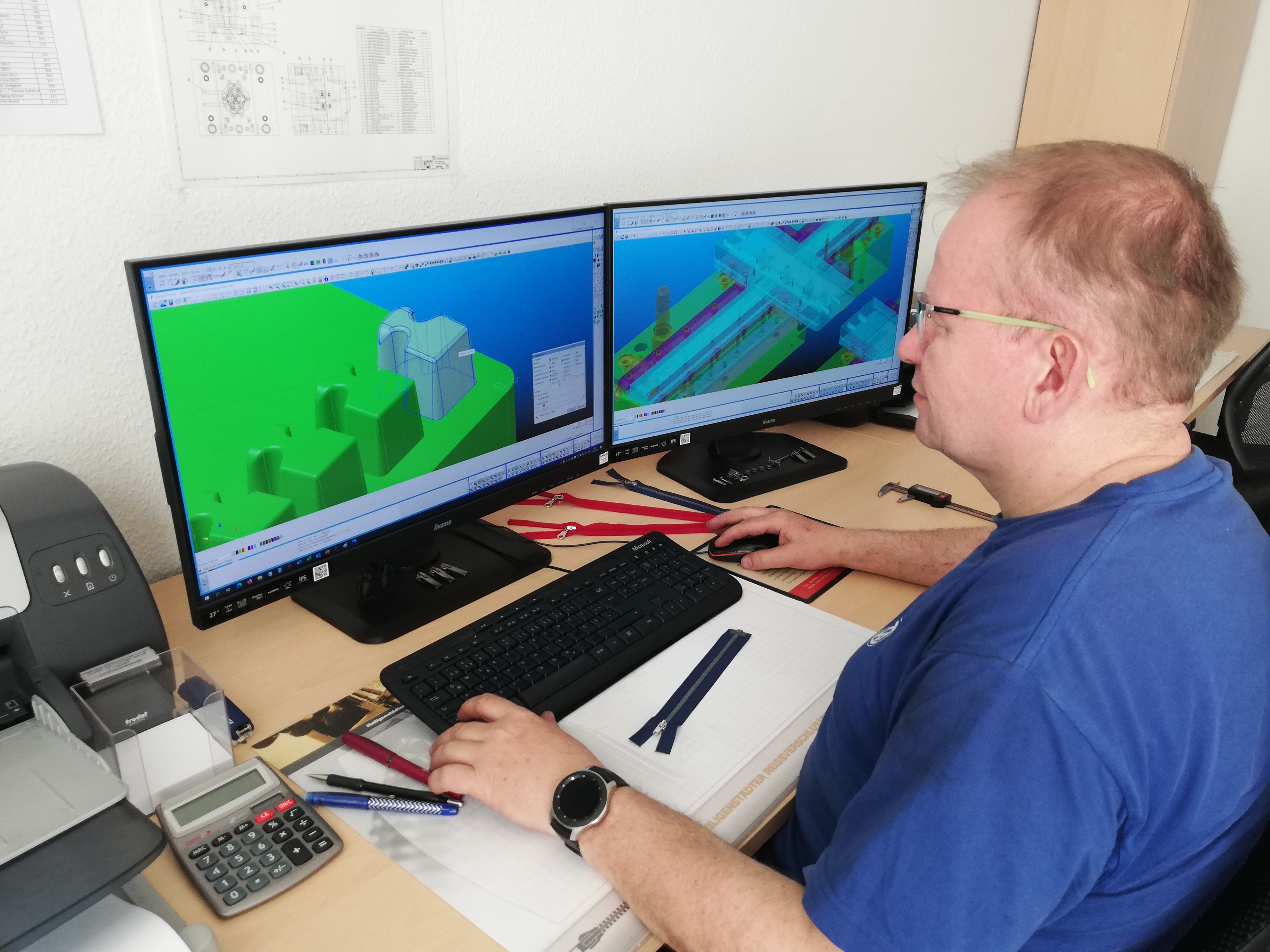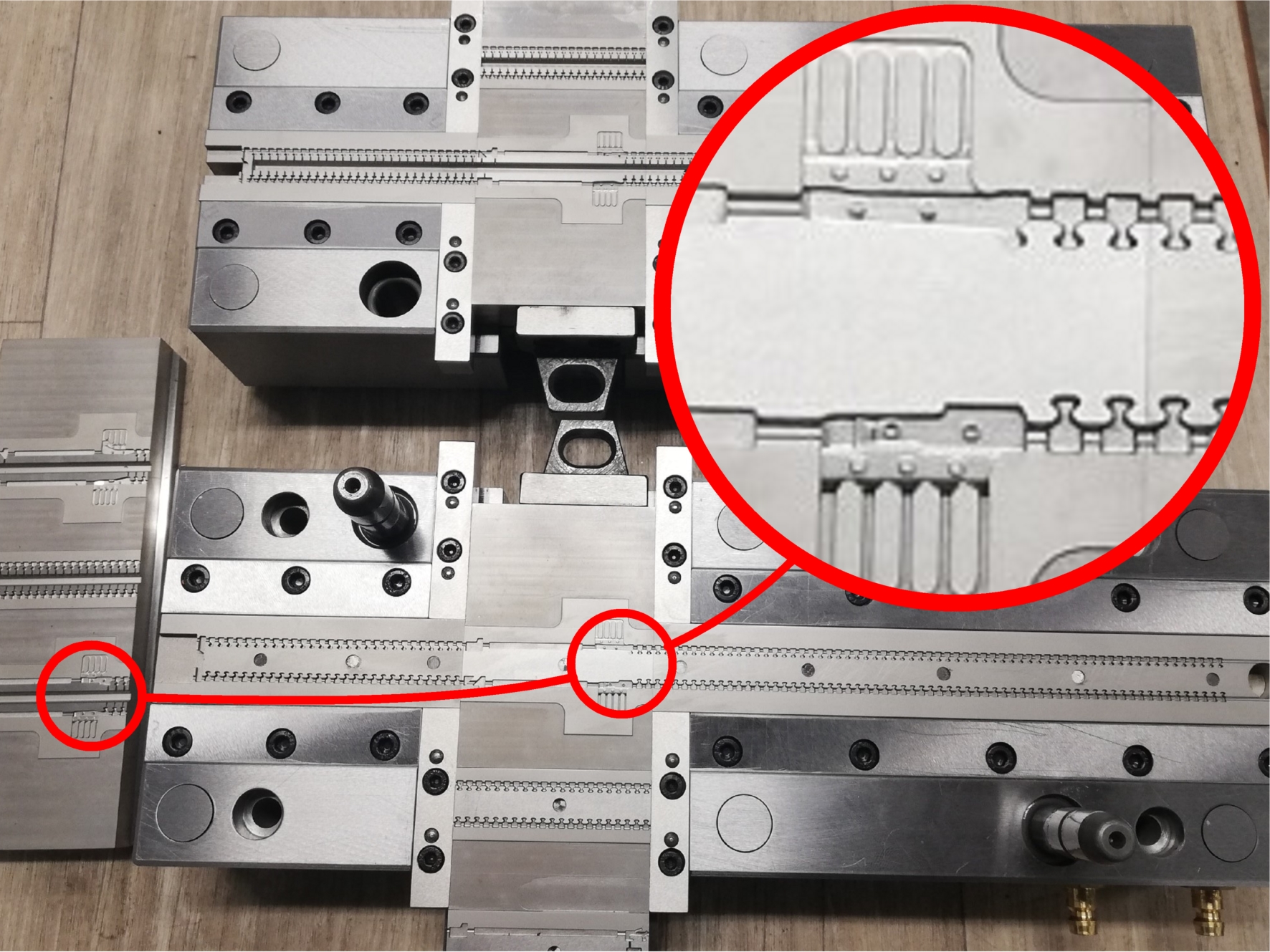Innovation in Micro Mould Tool Design and Machining
 June 2021 - The Heiligenstädter Reißverschluß GmbH & Co. KG, founded in 1992, can look back on a history that goes back to the 1870.
June 2021 - The Heiligenstädter Reißverschluß GmbH & Co. KG, founded in 1992, can look back on a history that goes back to the 1870.
The company has had experience in the development and production of zippers since 1935. Following this tradition, today's company produced over 15,000 kilometers of zippers in 2020 alone. This corresponds to about 38% of the equatorial circumference. With approximately 100 employees, the renowned manufacturer produces for a wide range of applications that includes zippers for clothing, upholstered furniture, outdoor equipment (sleeping bags, tents and tarpaulins) through to special flame-retardant, water-repellent and UV-absorbing designs.
In 2002, the Heilgenstadt-based company implemented the CAD / CAM software Pictures by PC from the German software manufacturer SCHOTT SYSTEME GmbH as their central system for product development and production. Since this time, the software has been central to the acceleration of product innovations.
Innovation in Plastic Staple Zippers
From July 2021, the PK0 plastic staple zipper will be produced in series. These are the smallest zippers that the company has developed to date and are specially designed for baby and children's clothing. Made from Polyoxymethylene POM plastics for extreme durability and flexibility, the teeth are injected directly onto the surrounding textile tape. Since it is made of plastic, an infinite range of colour combinations can be offered from the strap to staple colour including novel glow in the dark variants (ideal for matching the product to fashion garments).
 As with all products from Heiligenstädter Reißverschluß, their Pictures by PC CAD/CAM software is a central component of the entire product design and development, including mould tool and electrode design and machining. Mr. Bernd Kellner head of Technical Development explains “From planning to tool making to series production, we rely on one single software solution. The open system structure and the wide range of well-thought-out 3D modelling possibilities offer great advantages during design. In particular, the addition of sketches and photos and the import of external files leave nothing to be desired.” (Figure 1)
As with all products from Heiligenstädter Reißverschluß, their Pictures by PC CAD/CAM software is a central component of the entire product design and development, including mould tool and electrode design and machining. Mr. Bernd Kellner head of Technical Development explains “From planning to tool making to series production, we rely on one single software solution. The open system structure and the wide range of well-thought-out 3D modelling possibilities offer great advantages during design. In particular, the addition of sketches and photos and the import of external files leave nothing to be desired.” (Figure 1)
Even when using the latest CAD / CAM software, the entire design and development process for the PKO series still took 18 months. The zipper must meet demanding standards, and the transverse strength is particularly important. Here the zipper has to withstand a force of 200 Newtons over a length of 1 inch (approx. 25mm). The final production mould designed using Pictures by PC includes a clever sliding section that can be interactively swapped to shape either the zipper start, middle and end sections, allowing for continuous moulding regardless of zipper length. (Figure 2)
Precision Mould and Electrode Machining
In the past, their MAZAK milling machines were programmed manually. Pictures by PC was purchased in 2002 to modernise the manufacturing methods. With products that are becoming increasingly complex, such as the PK0 zipper, the advanced machining strategies from SCHOTT SYSTEME GmbH such as trochoidal high performance cutting (HPC) and high-speed finishing (HSC) are essential for the optimal cutting of hard tool steels and copper electrodes, with Mr. Kellner explaining “Without good CAD / CAM software such as with Pictures by PC, the ever more complex construction and mould making processes are no longer possible”.
 Figure 3 helps to illustrate the precision of the PK0 zipper. Each individual tooth is 2 mm wide, 3 mm long and 2.4 mm high. The smallest corner radius on the tooth is a tiny 0.1 mm, with the gap between the cramps being approx. 0.9 mm. Using the milling strategies developed by SCHOTT SYSTEME, precise moulds and electrodes were machined in hard materials utilising tools as small as 0.2mm in diameter.
Figure 3 helps to illustrate the precision of the PK0 zipper. Each individual tooth is 2 mm wide, 3 mm long and 2.4 mm high. The smallest corner radius on the tooth is a tiny 0.1 mm, with the gap between the cramps being approx. 0.9 mm. Using the milling strategies developed by SCHOTT SYSTEME, precise moulds and electrodes were machined in hard materials utilising tools as small as 0.2mm in diameter.
One of the main strengths of the Heiligenstadt-based company is their ability to manufacture the zipper clasps and grip plates according to exact customer requirements, such as logos and lettering (company branding). The flexible handling of the personalised graphics is made easier with Pictures by PC’s own 2D vector graphic tools as well as the import of various other graphic formats (Adobe Illustrator, Corel Draw, WMF cliparts, bitmap vectorisation). Typesetting and manipulation (Truetype, Postscript) also meet the highest typographical requirements (Kerning, Editing, Unicode). The machining of the personalised 2D customer branding directly onto the 3D moulds and electrodes is facilitated by the industrial engraving and carving toolpaths generated by Pictures by PC. Mr Kellner elaborates “The seamless transition to the CAM module offers great advantages, especially when it comes to lettering. This enables us to project logos and lettering onto free-form surfaces without any problems and thus mill and engrave the electrodes for die sinking of the mould inserts. A great advantage of the CAM module are the many machining strategies that are available as standard”
Award Winning Mould Design in Miniature
 The additional competence of Heiligenstädter Reißverschluß GmbH & Co. KG in innovative precision mould making was confirmed once again by the receipt of the 2020 Zinc Die Casting Prize at the Euroguss exhibition in Nuremberg. Their award-winning cast part "suitcase" was a decorative zinc die-cast suitcase designed for a special series of wooden collectible figurines. Required to be an exact scale replica, the suitcase (measuring 20 x 14 x 7.5mm) included extra fine details, such as the case corners, that when scaled down resulted in a protrusion from the case body of just 0.2mm. (Figure 4)
The additional competence of Heiligenstädter Reißverschluß GmbH & Co. KG in innovative precision mould making was confirmed once again by the receipt of the 2020 Zinc Die Casting Prize at the Euroguss exhibition in Nuremberg. Their award-winning cast part "suitcase" was a decorative zinc die-cast suitcase designed for a special series of wooden collectible figurines. Required to be an exact scale replica, the suitcase (measuring 20 x 14 x 7.5mm) included extra fine details, such as the case corners, that when scaled down resulted in a protrusion from the case body of just 0.2mm. (Figure 4)
In order to cast such fine undercut details without imprint marks, the company employed their Pictures by PC software to design an intelligent solution of inclined ejectors that both formed and ejected the undercut regions of the suitcase corners, completely eliminating the need for mechanical sliders. The high machining precision of Pictures by PC and resulting surface finish (galvanised gold-plated) were compared during judging to ‘a watchmaker’s work’, with Mr Kellner commenting “The cast part impressively shows that even the smallest quantities are interesting for zinc die casting. We machine everything in-house using our Pictures by PC CAM software, including the milling of the mould cores and ejectors.”
Commenting on their 20-year partnership with SCHOTT SYSTEME, Mr Kellner summarises “Particularly noteworthy with SCHOTT SYSTEME GmbH is the free support, and as they are the actual maker of the software, any questions or problems we have are answered promptly. The large number of standard post processors that are available and the problem-free adaptation should also be mentioned - The software forms a cornerstone of our success.”





